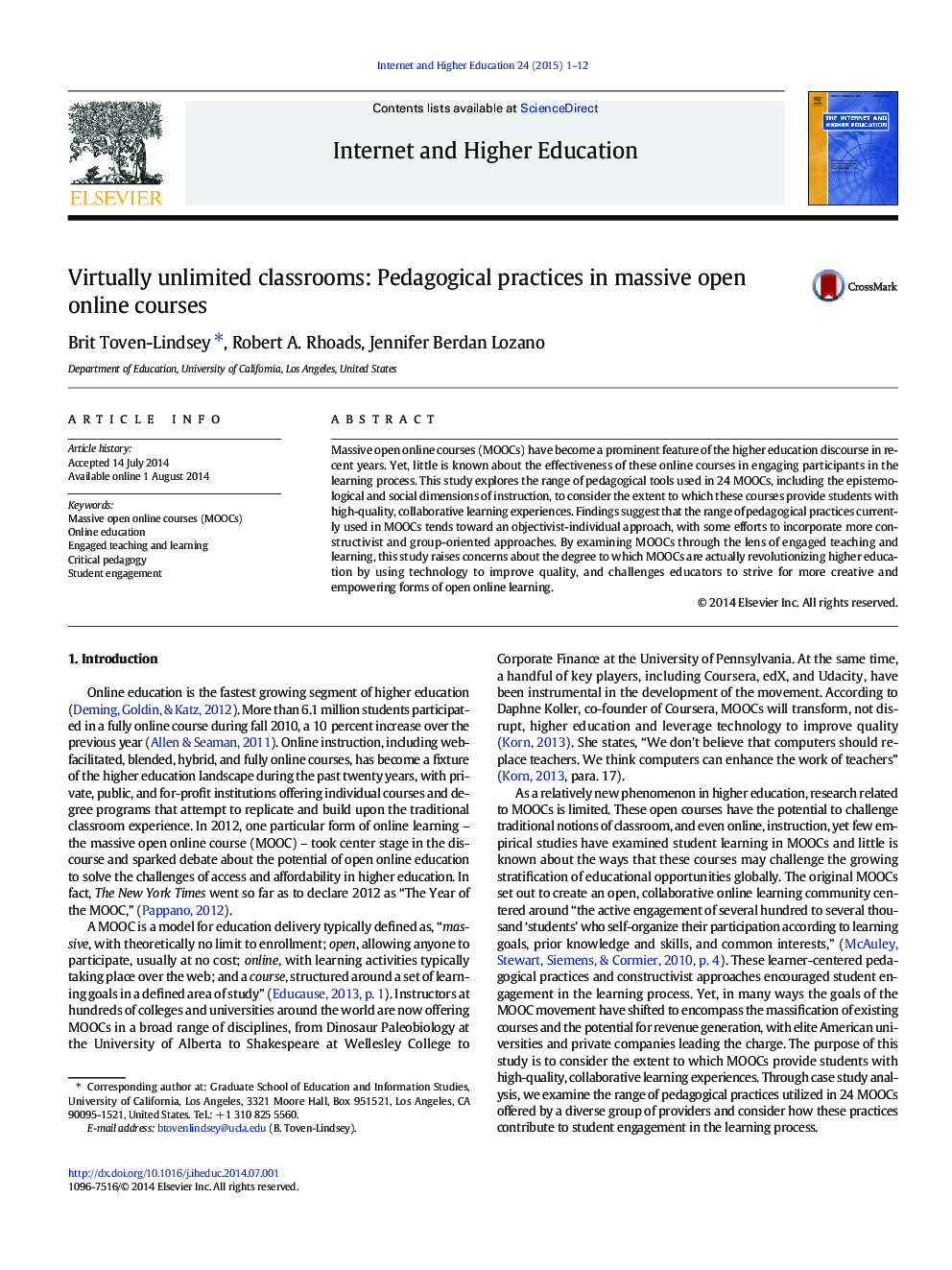| کد مقاله | کد نشریه | سال انتشار | مقاله انگلیسی | نسخه تمام متن |
|---|---|---|---|---|
| 357733 | 619946 | 2015 | 12 صفحه PDF | دانلود رایگان |
• Review of 24 MOOCs shows teaching methods similar to those of face-to-face courses.
• Findings suggest that MOOCs rely heavily on objectivist-individual teaching approach.
• Study found limited examples of effective constructivist-group teaching approach.
• Greater use of constructivist teaching may encourage persistence and learning.
• Innovative teaching methods may help MOOCs reach goal of increasing access.
Massive open online courses (MOOCs) have become a prominent feature of the higher education discourse in recent years. Yet, little is known about the effectiveness of these online courses in engaging participants in the learning process. This study explores the range of pedagogical tools used in 24 MOOCs, including the epistemological and social dimensions of instruction, to consider the extent to which these courses provide students with high-quality, collaborative learning experiences. Findings suggest that the range of pedagogical practices currently used in MOOCs tends toward an objectivist-individual approach, with some efforts to incorporate more constructivist and group-oriented approaches. By examining MOOCs through the lens of engaged teaching and learning, this study raises concerns about the degree to which MOOCs are actually revolutionizing higher education by using technology to improve quality, and challenges educators to strive for more creative and empowering forms of open online learning.
Journal: The Internet and Higher Education - Volume 24, January 2015, Pages 1–12
